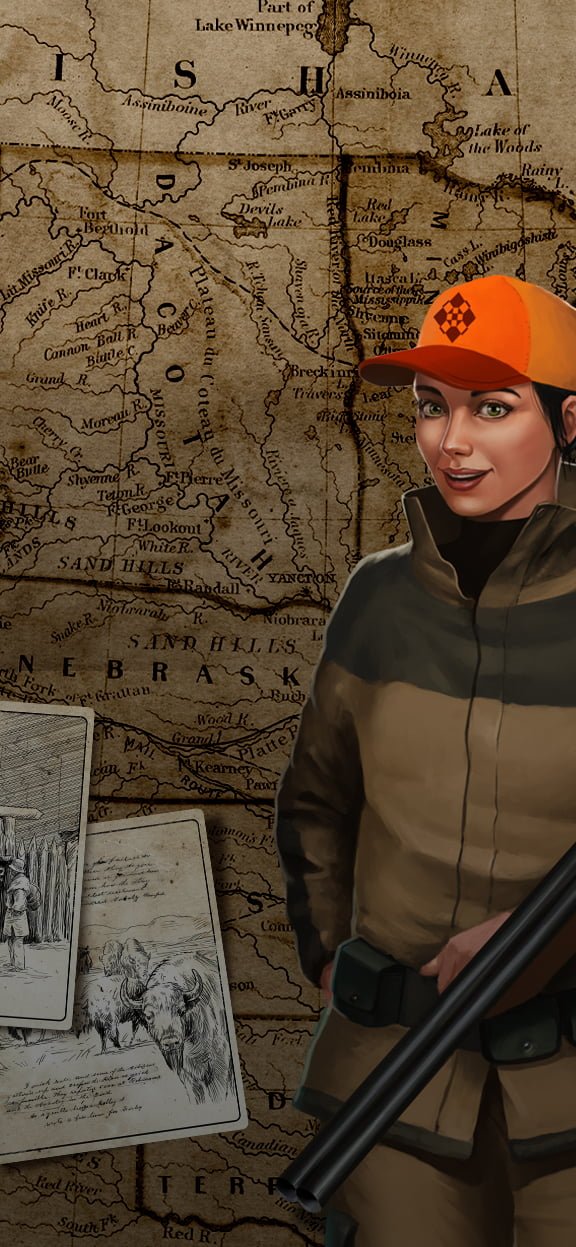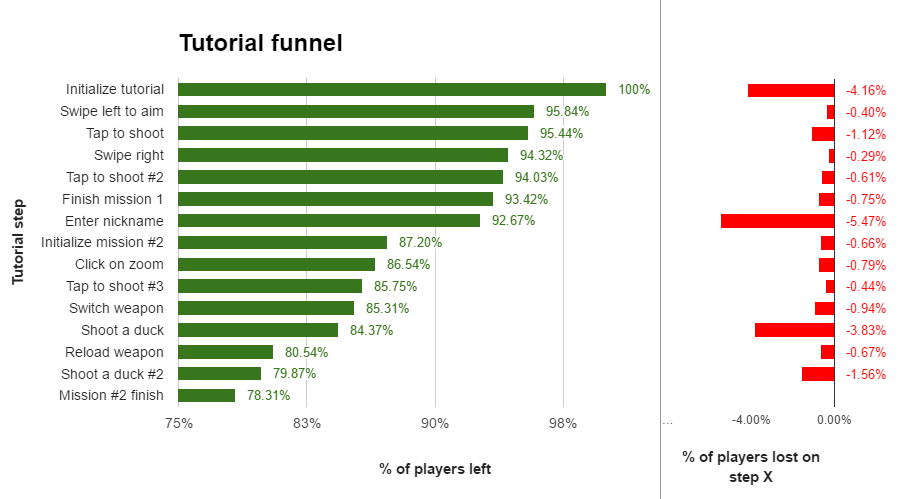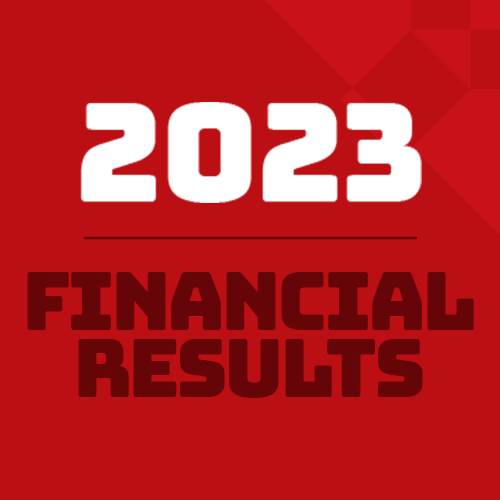



Game analytics can be helpful across all departments of a game development company. Just as the field of analytics in general helps companies to find trends, patterns, and insights into the effects of business decisions, game analytics studies the players’ behavior with the help of statistics and data analysis.
Each and every department of a game company has its own needs and problems to solve. For instance:
Game designers have to make a lot of decisions based on their past experience or intuition. Their ability to balance the game for the target audience can become biased due to their close, long-term involvement in its development. Game analytics can show whether or not their intuition is still accurate through certain visualizations, for example funnels.
A funnel shows the amount of players at each milestone and displays how many players are lost between each of the milestones. A funnel for the tutorial of a game would show the amount of players at the beginning of the tutorial, and each milestone would represent an important step that the game designers want to track during the tutorial. At Ten Square Games we use funnels on a daily basis in order to optimize tutorials or other early game segments.
Below, you can find a specific example of a tutorial funnel from one of our games. The funnel helped us to discover two major dropoffs of players.

One unusual dropoff was in the very early part of the tutorial where the players were supposed to enter their nicknames in order to customize their profiles. Game analytics allowed us to dig deeper into this problem, and through segmenting this data by the type of mobile device used, we were able to identify a subsegment of devices for which the virtual keyboard was not showing up. These players had no chance to even enter their nicknames and thus left our game. After receiving information pinpointing the problem, our engineers were able to fix the issue and eliminate the dropoff of players.
The second dropoff was of a non-technical nature. By the end of the tutorial, we asked the player to hunt some flying ducks with a shotgun in order to show some of the later mechanics of the game. For our seasoned game designers, this part was a cakewalk, but it turned out that new players had immense trouble finishing that particular tutorial step. It seemed that their motor skills and familiarity with the game’s user interface and aiming mechanics were not developed enough by this point. We removed this step from the tutorial and moved it to a later point in the game as a separate mini tutorial once the players were more accustomed with the game’s mechanics.
In both of these cases, game analytics were a big help in getting more players through the first parts of the game and making their experience with the game much more enjoyable.
Game analytics can also help to verify the game designer’s intuition in the field of economy balance. For example, how would you decide on the amount of starting resources the player should have in the game? Some methods might involve a lot of playtesting, and in some cases, by creating an early game model or simulation for the game’s economy. You might try to apply logical reasoning and to predict what would be the most logical behaviour of the “average” player. Unfortunately, this is difficult to do and players behave in all sorts of ways that you might not anticipate. Game analytics can help by providing a framework where different settings for the starting resources can be tested. For instance, based on your intuition, the starting resources were set to 500. Now, with the help of game analytics, you can launch a test where 34% of the new players will get those 500 starting resources, 33% will get 100 and the remaining 33% will get 1000 starting resources. Now you can monitor specific metrics like:
These metrics and other stats will then help our game designers to make a more informed decision based on data. In practice this is still not that easy as metrics and stats correlate with and influence each other, and often there is no black and white decision. Thus, the final decision must be chosen by prioritizing which metric is the most important for a particular test.
The development cycle of a free-to-play game never comes to an end. Once a game is released, the real work starts. The game analytics team provides the product team with a comprehensive overview of the early behaviour of the players, and the game designers monitor those metrics and come up with ideas for tests and alterations to the game. The field of free-to-play games is changing rapidly and mechanics that worked in the past might not work today. Additionally, each and every game is different, and knowledge from one game might not be transferable to another. Therefore, game analytics are a crucial part of the game development process in providing fresh, up to date insight about the players, what they like and what they do not like about the game in order to create a game that the customers really want and enjoy playing over a long period of time.
This short overview of game analytics only scratches the surface of the topics that are involved in the field. Several people with varying disciplines may work together as an analytics team. You will need engineers that take care of the development of tools and provide an architecture to store data. You will need analysts that are passionate about digging into the data to find patterns, providing dashboards for reporting, and communicating their insight effectively to the other departments. Lastly, you will need a data scientist or statistician that can aid in the development of more advanced algorithms in order to analyse massive amounts of data and to verify test results scientifically.
People working in the game analytics department should have a strong passion for gaming. Analysing pure numbers will never be as effective as being able to combine the data with your vast experience as a gamer in order to verify hypotheses and to come up with ideas for improving the game. Hard skills that are beneficial in this domain are the knowledge of Excel, visualization software like Tableau, and being able to query the database via SQL statements. Also, more and more analysts need to be able to use statistical software like SAS or RapidMiner. Even better is when they can produce their own algorithms and models in R or Python. Hard skills aside, someone working in the game analytics department needs to be able to communicate with people and to convince others of their ideas through well researched, creative, yet ultimately data driven presentations. Game analytics only add true value to the company when people are using the insights gained. The impact, however, can be highly profitable and tangible. Game analytics is a fascinating field in the game industry that will shape the way games are made for many more years to come.
Written by Damian Lilla, Head of Business Intelligence at TSG

The Employer Branding Excellence Awards have been organized for over a decade by the HRM…
read more
Ten Square Games (TSG) reports a 2023 record high quarterly EBITDA of over PLN 35…
read more
Have you ever wondered what the difference between working at a game development company and…
read more
Hi, I’m Alicja and I’m an art lead at TSG. I’d like to tell you…
read more